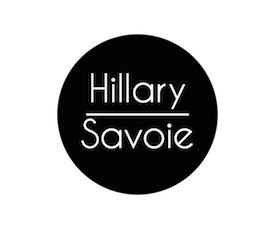Like many disorders, the disorder Esmé shares with an ever-increasing number of people has gone through several naming iterations. Each one expresses a number of policies and trends in naming diseases. Each one gives different information about the disorder: its discovery, its sympotoms, its mutation location. And each has downsides. One might be non-descript, another overly scientific, another offensive or out of date.
A name for a disease or disorder has to do a lot of things. It has to do the work of establishing a shared label for a group of people so that they can benifit from shared research and treatment. It has to help doctors doctors figure out how to diagnose their patients and what kinds of testing to run. It has to help raise awareness.
The name is a symbol, shorthand that, at its most basic level, helps us all know we are talking about the same thing. This is increasingly essential in a time when genetic diagnosis is complicating our ideas about the boundaries of disorders, separating what we thought were together, and joining what we thought were separate.
But the name of a disorder is also a label that may follow a person through her entire life. It has meaning above and beyond letting doctors know that they are talking about “the same thing,” it has implications for how people who carry these labels are perceived by their peers, by their society.
It is important.
The question of a name-change for PCDH19 Epilepsy was recently brought up in at the PCDH19 conference held last weekend, attended by approximately 40-50 people including parents, researchers, clinicians, and industry representatives. The public discussion of a name began as the result of one researcher’s presentation. Parents suggested keeping track of name idea on the white board in the room, and the then asked to continue the discussion as the conference was drawing to an end. A handful of options were discussed and voted on by the approximately 18 people in the room at the time…leading to a final suggestion of a name change to “Girls’ Cluster Epilepsy” in order to reflect the most common features of the disorder: clustering seizures that onset in infancy and early childhood in females almost exclusively (although there are a statistically significant number of males who experience epilepsy and a number of women with the mutation who do not experience epilepsy).
Interestingly, although somewhat predictably, the PCDH19 community on the whole has reacted passionately in non-uniform way to the suggestion. Each parent that I have spoken to about it has different concerns…all of which are valid and telling of the kinds of challenges faced in naming a disorder–especially one like PCDH19 that can include such a wide range of symptoms and presentations. I’d like to explore some of these concerns here, but first, let me explain some of the previous names and the challenges those names face.
The disorder was originally called Juberg-Hellman, named for the researchers who first described the disorder in 1971. It’s not exactly “catchy,” and at some point it has gone out style to name disorders for thise that first identify them. At some point the more commonly used name became EFMR (Epilepsy in Females with Mental Retardation)–which was, no-doubt an attempt to aid in using a more “descriptive” name to aid in diagnosing and describing patients. The problem here is that most of the English-speaking world is offended by the use of the terminology of “mental retardation” and since Rosa’s Law was signed into law in 2010, the term “mental retardation” is no longer considered a valid medical term in the United States. Additionally, approximately one-third of the girls with the disorder do not have intellectual disability. When the gene that causes this disorder was discovered in 2007, as was common practice at the time, the disorder began to be called by the name of the gene involved. In this case, PCDH19. So terms like PCDH19 Female Limited Epilepsy or PCDH19 Female Epilepsy became the commonly accepted terminology. But, with the discovery of a number of mosaic males the “female” in the name may be becoming less and less relevant.
Most people find the name “PCDH19” a bit hard to swallow at first…although it has grown on me in many ways. I think that people do find it memorable due to its absurdity…and I almost always have engaging exchanges around the name.
For the parents that I have heard from there are a number of concerns about the proposal to change the name to “Girls’ Cluster Epilepsy” and I will do my best to properly represent these concerns here:
1. Girls or Women: A number of people take offense to the use of the term “girl.” One parent I spoke with sites literature on how people with disabilities tend to be infantilized and that giving a diagnosis with the “girl” in it would contribute to that problem. Since women struggle with equal treatment to begin with, pegging our children with the life-long label of “girl” is a potentially serious problem for their ability to be seen as strong and independent women at some point.
2. Lifelong Diagnosis: There is an issue also of duration of diagnosis. So, in the event that (as we all hope will be the case) our “girl” out grows her seizures and becomes a “woman,” she no longer has an obvious diagnosis…even though she may still exhibit other symptoms associated with PCDH19 mutations.
3. Severity: Girls’ Cluster Epilepsy actually sounds rather benign and excludes many of the aspects of the disorder that can be even more debilitating than the seizures: intellectual disability and developmental delay as well as behavioral and psychological challenges such as aggression, autistic-like features, depression, anxiety.
4. Professionalism: Since our children have a very rare disorder, many of us are used to being looked at like we may or may not be making up this odd disorder with a bizarre inheritance pattern. Having a name like PCDH19 at least sounds scientific. Girls’ Cluster Epilepsy sounds rather colloquial and might be unconvincing.
5. International Concerns: There are a number of large groups of patients with this disorder in the non-english speaking world. It seems important that both the name and acronym are properly vetted by the international community involved in PCDH19 research.
6. Boys: There are a small number of males who have a mosaic presentation of the disorder and exhibit symptoms. Having a disorder called “girls” anything could be very problematic for them–this could have happened by accident before knowing about them, but since we do know about them–and can expect their numbers to grow–they should be considered as well.
7. Timeline: We are in a rapid discovery period in PCDH19. There is a lot of active research going on in the field and new cases being identified constantly. It seems as though we are on the edge of having a better understanding of this disorder–who is effected and how certainly does not fit our earliest understanding of the disorder and that knowledge is rapidly expanding.
I do hope that the scientific community will be responsive to this feedback because, while they do need a name that is evocative in order to aid in diagnosis, this is a label that will continue to follow children like Esmé for a long time. Many of us hope the discussion of a name will be put on hold until such time as it can be discussed in more detail by all invested parties.
Because this name matters. It matters to us–to our daughters (and sons!).

